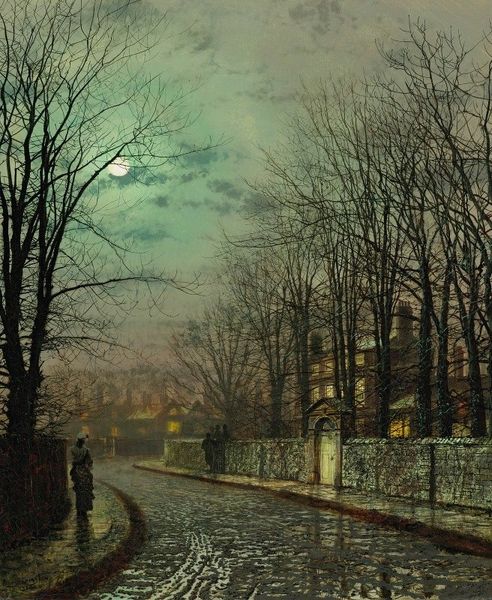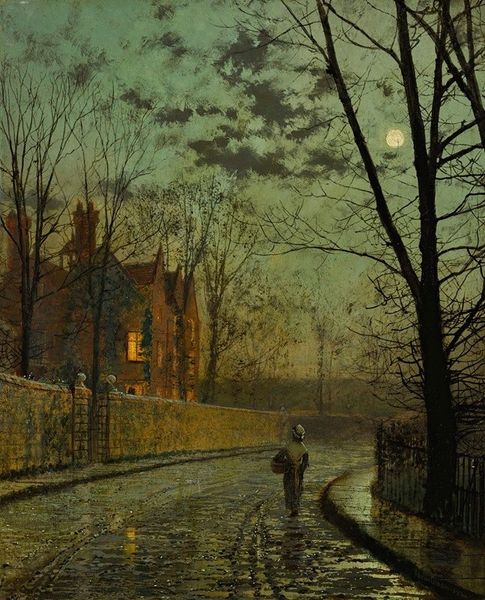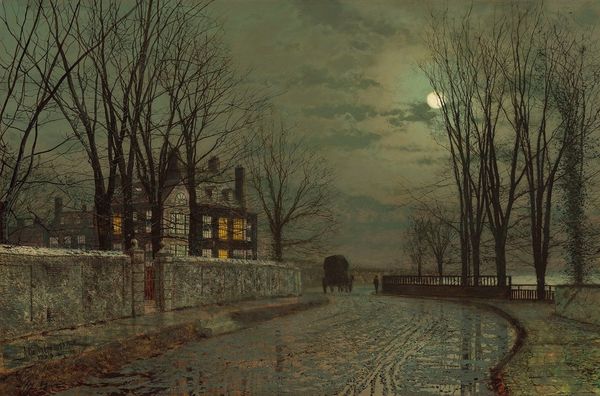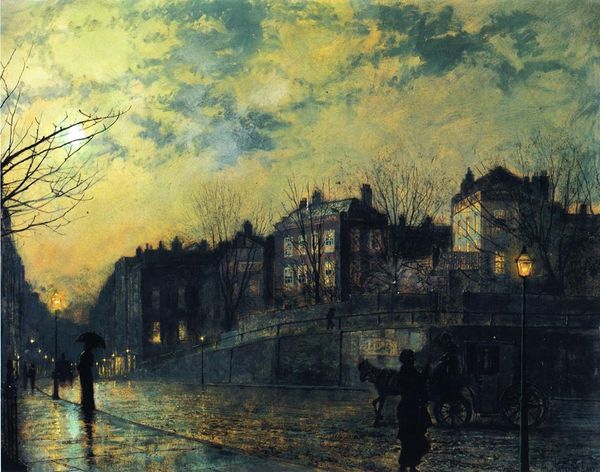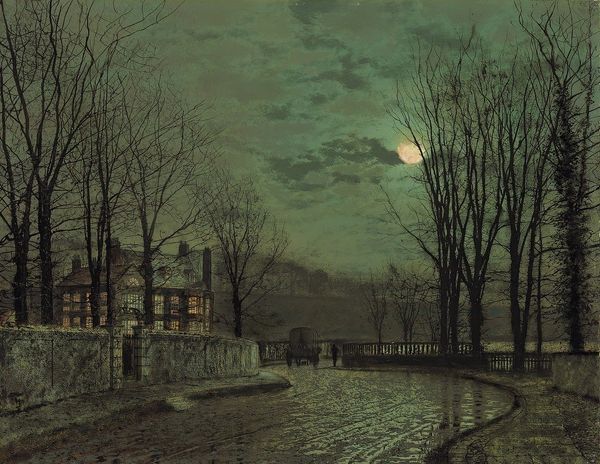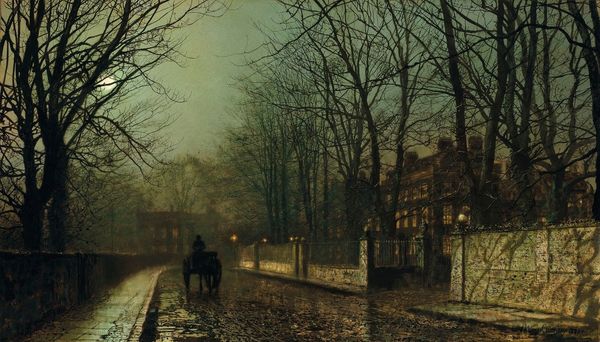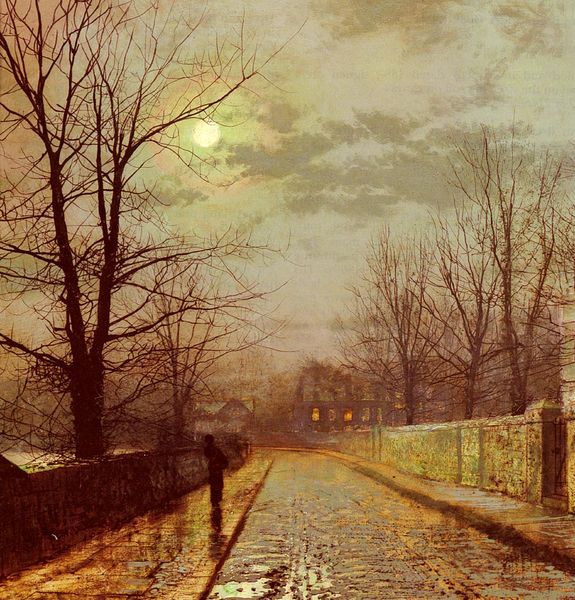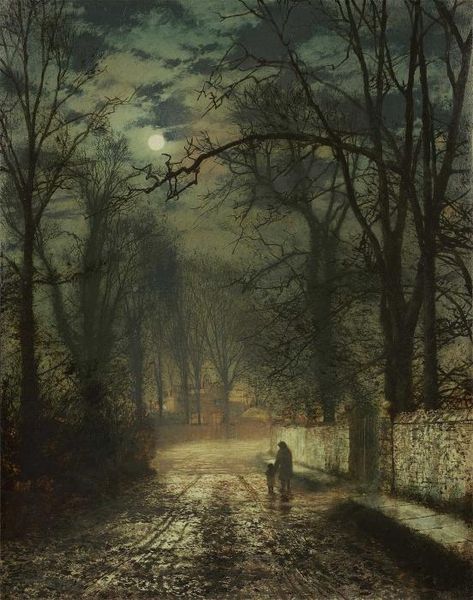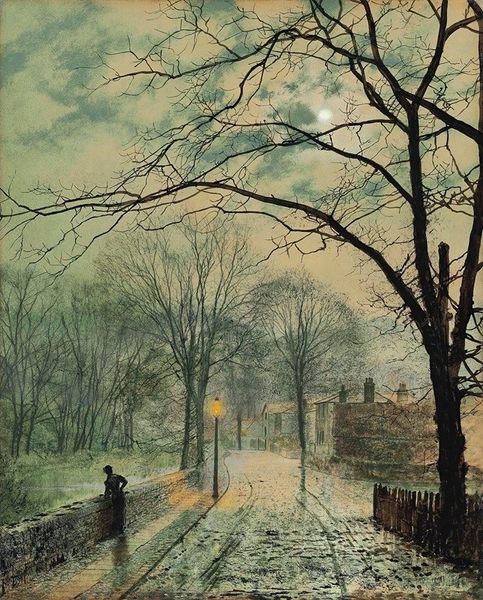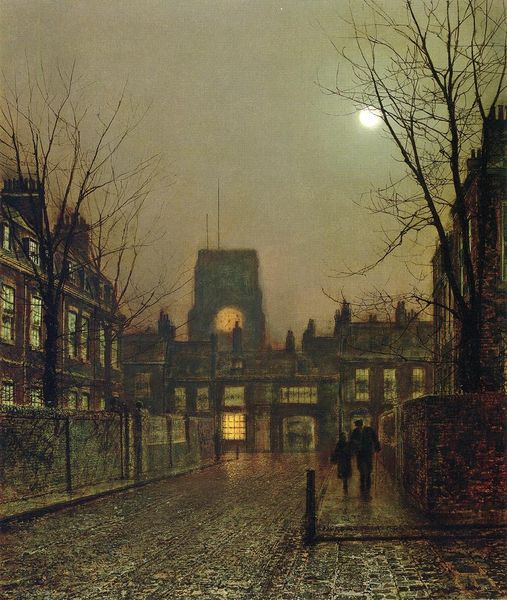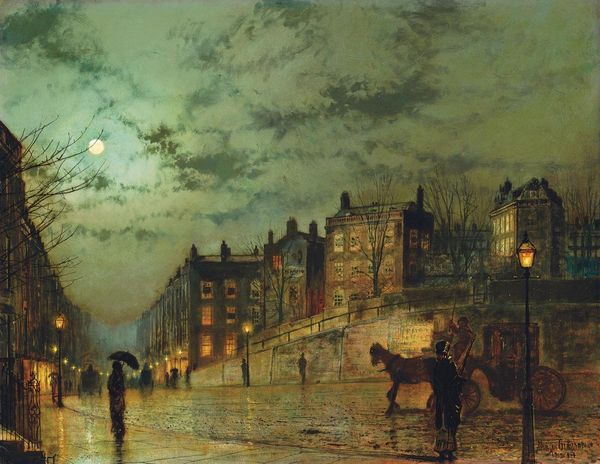
Copyright: Public Domain: Artvee
Curator: Alright, let’s dive into John Atkinson Grimshaw’s "A Wet Road, Knostrop, Yorkshire," painted in 1886. The medium is oil on canvas, creating that palpable sense of atmosphere. Editor: Immediately, I’m struck by the almost melancholic stillness of this nighttime street scene. You can almost feel the damp chill in the air. It’s as if time has slowed down, even the light seems heavy. Curator: That heaviness is something Grimshaw excelled at capturing. What I always found intriguing is the layering of realism with a sense of almost theatrical drama, don’t you think? The gas lamps illuminating the slick cobblestones. There’s a distinct emphasis on texture and how things were actually illuminated during those hours of the night, even with limited technology. Editor: Precisely, and think about the gaslight industry—how new infrastructure like this transformed working class life and social activities. Grimshaw doesn’t shy away from the gritty reality, showing not just pretty street corners, but a lived environment. You’ve got the tangible surface of the road underfoot as well as the labor behind its construction. Curator: And you’re so right to bring up class implications here as well. This isn’t just about documenting technology for technologies sake. Think about who would be out on such a night—people making ends meet—rather than the leisurely, wealthy consumer. There’s something innately beautiful, and yes romantic in seeing it from this lens. It's a very romantic approach that he embraces through a very technical focus. Editor: Agreed. It's like Grimshaw gives material weight and symbolic power to something as ordinary as a wet road after a shower, revealing hidden systems and social relationships in those details. The materials dictate everything and hold as much content as its obvious symbolic counterparts. It truly forces the viewer to question not just *what* is displayed but also *how* it is displayed. Curator: Ultimately, Grimshaw uses paint, canvas and technique to transform the mundane into something profoundly evocative, like memory materialized. Editor: Definitely food for thought—that ordinary life might indeed be worth memorializing.
Comments
No comments
Be the first to comment and join the conversation on the ultimate creative platform.
